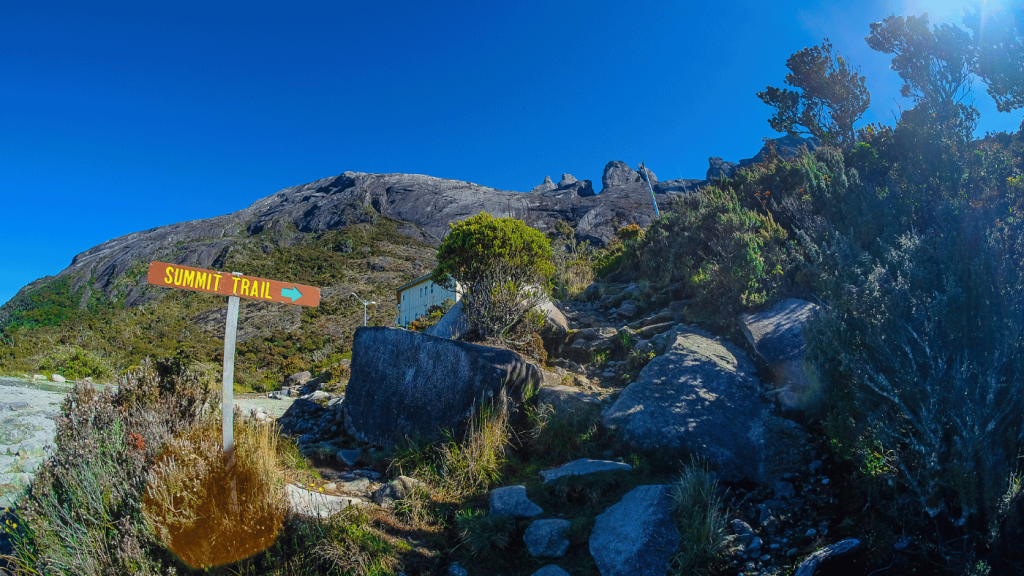Mount Kinabalu, located in Sabah, Borneo, is the highest peak in Southeast Asia, standing at a majestic 4,095 meters. Every year, adventure seekers from around the world take on the challenge of climbing this iconic mountain. The journey to the summit and the stunning views from the top make the climb a life-changing experience. In this article, we will guide you through everything you need to know to prepare and conquer this unforgettable adventure.
Preparing for Your Mount Kinabalu Adventure

If you are planning to climb Mount Kinabalu, there are a few things you need to know to prepare yourself for this challenging adventure. Mount Kinabalu is the highest mountain in Southeast Asia, standing at 4,095 meters tall, and is located in the Malaysian state of Sabah on the island of Borneo. The climb is not for the faint-hearted, but with proper preparation, anyone can conquer this mountain.
Physical Fitness and Training
Before embarking on your Mount Kinabalu adventure, it is essential to assess your physical fitness level. Climbing Mount Kinabalu requires a good level of fitness and stamina. It is recommended that you start training at least a month before your trek, focusing on cardio and strength training exercises. Jogging, hiking, and climbing stairs are great ways to improve your endurance and stamina. Make sure to consult with a doctor before beginning any new exercise program.
It is also essential to acclimatize yourself to the altitude before the climb. You can do this by spending a few days at a higher elevation before starting your climb. This will help your body adjust to the lower levels of oxygen at higher altitudes, reducing the risk of altitude sickness.
Essential Gear and Packing List
Packing for a Mount Kinabalu climb requires careful planning. Essential items include sturdy hiking boots, layered clothing, a rain jacket, a headlamp, a backpack, and a water bottle. It is also crucial to bring a hat, gloves, and additional warm clothing for the summit climb. Don’t forget to pack snacks, energy bars, and a first aid kit for emergencies.
When choosing your clothing, it is important to remember that the temperature can vary greatly throughout the climb. The temperature at the base of the mountain can be warm and humid, while the summit can be freezing cold. Layering your clothing will allow you to adjust to the changing temperatures as you climb.
Choosing the Right Guide and Tour Package
Choosing the right guide and tour package will enhance your experience and ensure your safety. Look for licensed guides who have experience leading climbers up Mount Kinabalu. Booking with a reputable tour operator is also vital. Research the different tour packages available and choose one that suits your budget and preferences.
When choosing your tour package, consider the duration of the climb, the level of difficulty, and the services provided. Some tour packages include transportation, accommodation, and meals, while others only provide a guide. Make sure to read the fine print and ask questions before booking your tour.
With proper preparation and planning, climbing Mount Kinabalu can be a rewarding and unforgettable experience. So, pack your bags, put on your hiking boots, and get ready to conquer the mountain!
The Journey to Mount Kinabalu

Reaching Kota Kinabalu
Kota Kinabalu is a bustling city located on the west coast of Sabah, Malaysia. It is a popular tourist destination known for its beautiful beaches, fresh seafood, and vibrant nightlife. You can reach Kota Kinabalu by air from Kuala Lumpur or Singapore. The flight takes about two hours, and you can enjoy stunning views of the South China Sea and the lush green landscape of Sabah from the plane.
Once you arrive in Kota Kinabalu, you can take a bus or a taxi to Kinabalu Park, which is about two hours away. The road to Kinabalu Park is scenic and winding, with breathtaking views of the Crocker Range and the surrounding countryside. You will pass through small towns and villages, where you can see the traditional houses of the Kadazan-Dusun people, the largest ethnic group in Sabah.
Exploring Kinabalu Park
Kinabalu Park is a vast nature reserve that covers an area of 754 square kilometers. It is a UNESCO World Heritage site and home to a diverse range of flora and fauna, including over 5,000 species of plants, 326 species of birds, and 100 species of mammals. The park is also the gateway to Mount Kinabalu, the highest peak in Southeast Asia.
Take some time to explore the park and appreciate its natural beauty. You can go on a guided nature walk to learn about the different plants and animals in the park, or visit the exhibition center to see the interactive displays about the geology, ecology, and cultural heritage of the area. You can also relax and enjoy the cool mountain air, or have a picnic by the river.
Acclimatizing at Laban Rata
On the first day of the climb, you will trek for six hours to reach Laban Rata, a resting point located at 3,272 meters. The trail is steep and challenging, but the views of the surrounding mountains and valleys are spectacular. Along the way, you will pass through different vegetation zones, from the lowland dipterocarp forest to the montane oak-chestnut forest. You may also encounter some of the wildlife that live in the park, such as the Bornean gibbon, the mountain blackbird, and the Kinabalu giant red leech.
At Laban Rata, you will stay in a comfortable mountain hut, where you can rest and acclimate to the altitude. The hut has basic facilities, such as bunk beds, blankets, and a dining area. You can also enjoy a hot meal and a cup of tea, and chat with other climbers from all over the world. In the evening, you can admire the stars and the city lights below, and prepare for the summit push the next day.
The Climb: Day One
Starting the Trek at Timpohon Gate
The trek officially begins at Timpohon Gate, where you will register and receive your ID tag. During the first day, you will trek for six hours through a variety of terrains, including forests, rocky paths, and steep inclines.
Navigating the Trail and Rest Stops
The trail is well-marked, and rest stops are located at regular intervals. Take advantage of these stops to rest, hydrate, and refuel. Don’t forget to enjoy the stunning scenery along the way.
Overnight Stay at Pendant Hut
Pendant Hut is the overnight stop on the first day of the climb, located at 3,289 meters. The accommodations are basic, but comfortable, with bunk beds and shared restrooms. Make sure to get a good night’s sleep before the summit push.
The Summit Push: Day Two

The Early Morning Start
The summit push begins at 2 am, with a hot drink and a light snack to provide energy for the climb. The climb to the summit is steep and challenging, and the altitude can be challenging. The key is to take it slow and steady.
Conquering the Steep Ascent
The last leg of the climb is the steepest, with a series of switchbacks leading to Low’s Peak, the summit of Mount Kinabalu. This section requires extra care and attention, especially if the weather is unfavorable.
Reaching Low’s Peak: The Summit Experience
Reaching Low’s Peak is a life-changing experience, with breathtaking views of the sunrise and the surrounding mountains. Take some time to savor the moment and reflect on your achievement. Capture the moment with plenty of photos before beginning the descent back to Kinabalu Park.
Finally, climbing Mount Kinabalu is a once-in-a-lifetime adventure that requires preparation, determination, and a spirit of adventure. By following our guide and recommendations, you can conquer this iconic peak and create unforgettable memories that will last a lifetime.

